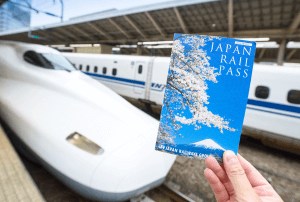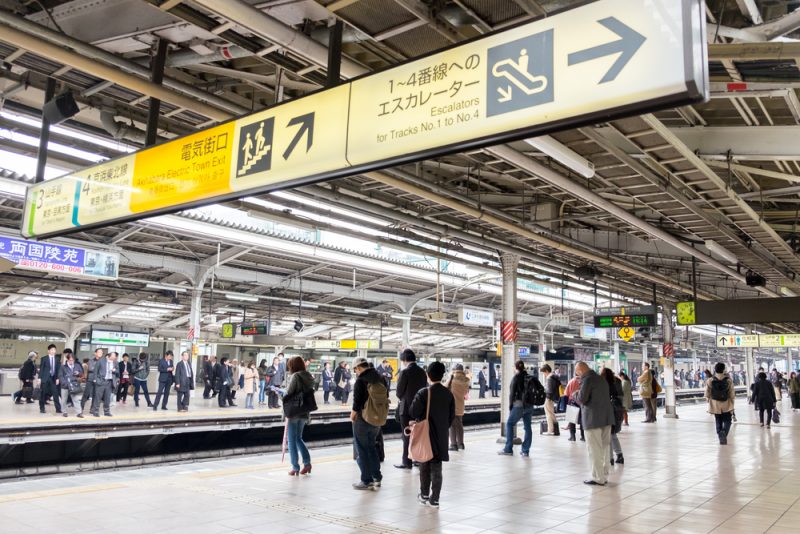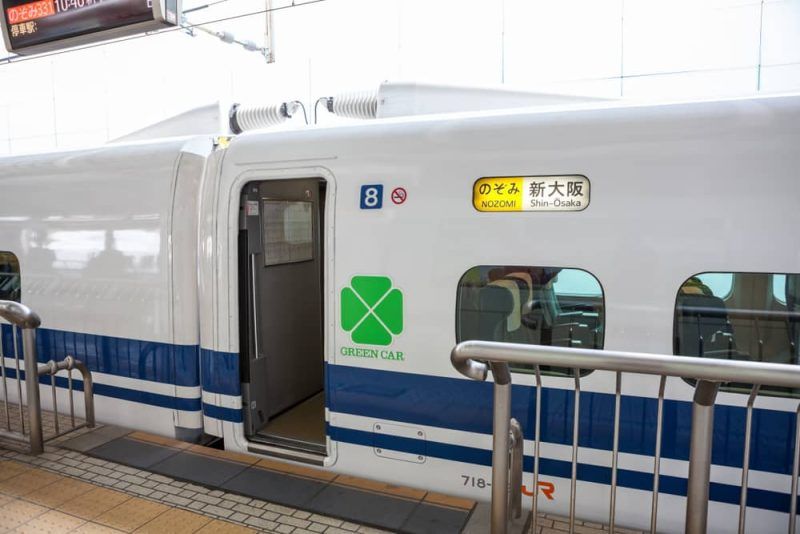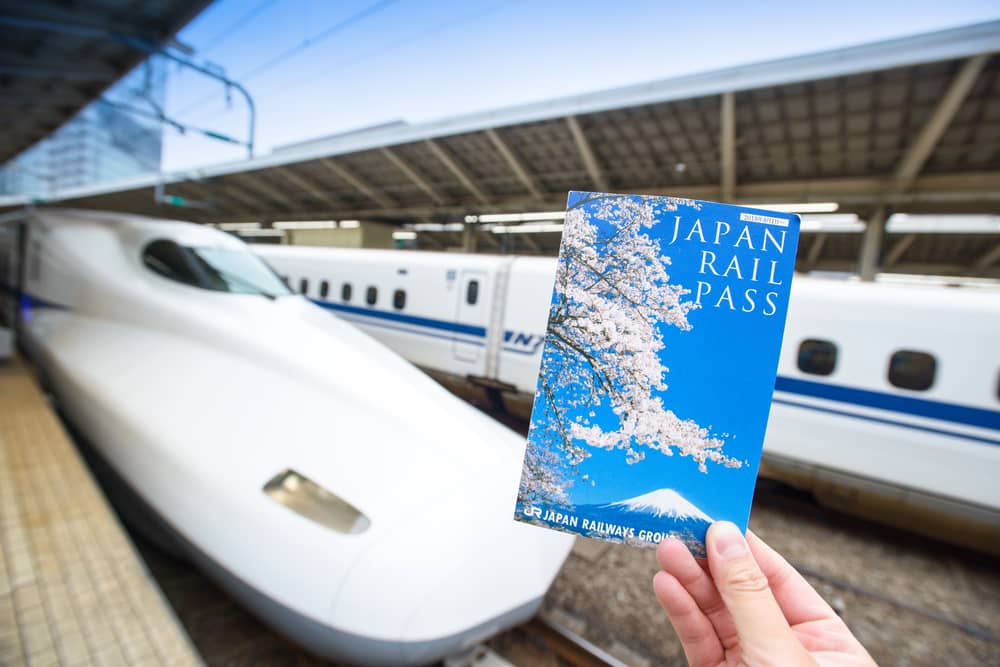Not sure how to use the Japan Rail Pass? Check out our detailed guide and handy video to find out!
The Japan Rail Pass is an all-you-can-ride discounted train ticket for foreigners visiting the country. It’s the most practical way to travel all over Japan.
It provides unlimited access to major Japan Railways trains and Shinkansen bullet trains that connect main cities, like Tokyo Kyoto and Osaka, and take you to the country’s biggest and best attractions.
It also grants access to local trains as well as other means of transportation to cover your travels around Japan.
Table of Contents
How does the JR Pass work?
The JR Pass is available for 7, 14, and 21-day trips. It’s only available for foreigners visiting Japan with a “Temporary Visitor” stamp (or Japanese nationals who have lived abroad for 10 years or more).
Once you have purchased your Japan Rail Pass, you’ll receive an exchange voucher by mail. You can receive the voucher at your home address or, alternatively, we can mail it to your hotel or most accommodation in Japan.
To use your JR Pass, you must validate and exchange your order for the actual pass once you arrive in Japan. This must be done a maximum of 90 days after your purchase.


- All Shinkansen trains
- Rapid and Local JR trains
- JR bus and ferry services
- Airport Transfers
A single ticket, huge savings.
How to activate the JR Pass
Once you arrive in Japan, you need to go to a JR Exchange Office, which can be easily found at airports and main train stations. Remember to bring your Japan Rail Pass voucher and your passport — they’re needed for your pass to be activated.
Not sure which JR Exchange office is closest? Check the Japan Rail Pass guide that you receive along with your exchange order!
At the office, you will fill out a form with your personal details and show your passport and entry stamp. When exchanging your voucher, you will choose a starting date, or first day of use, for your Japan Rail Pass.
The starting date does not have to be the same day as the exchange date. However, it has to be within 30 days of the date in which the exchange is made. Please keep in mind that the date cannot be altered once your JR Pass is activated.
Once it’s validated, you’ll be able to use your pass starting on the date you have chosen for the consecutive number of days for which your pass is valid.
How to use the JR Pass: Video guide
What’s covered by my JR Pass?
Once activated, you’re ready to travel! Use your pass for JR and Shinkansen trains, as well as JR Buses, JR Ferries, and airport transfers, like the Narita Express in Tokyo and Haruka Express in Kyoto and Osaka.
The Tokyo Monorail is also accesible with the JR Pass, along with some useful lines for local transport, like the Yamanote Line in Tokyo or Osaka’s Loop Line. For some city metro services, you’ll need to pick out separate tickets.
Nozomi and Mizuho Shinkansen trains are now partly covered by your JR Pass. Simply pick up a subsidized complementary ticket to take either of these services.
Seat reservation
With your JR Pass in hand you can start exploring Japan on the Shinkansen and extensive rail system! You can go to any JR ticket office (Midori-no-madoguchi), to make a seat reservation. Here are some tips on selecting your seats in advance:
- There’s no additional charge for making a seat reservation. with your JR Pass.
- You cannot book a seat once you have boarded the train, so make sure to do so before departure.
- It’s possible to make all seat reservations for your trip in just one visit to a ticket office.
- To change or cancel your reserved seating, visit a JR ticket office.
To book, ticket office staff will help you select your preferred departure time, or you can also look up the train times in advance. Check out our guide on Shinkansen timetables for more advice on choosing departure times.
It’s also possible to make seat reservations with ticket machines in JR stations. To do so, scan the QR code on your JR Pass and select the service you wish to travel on. The final step is to choose your preferred car and seat.
Once the process is complete, you’ll be given a reservation ticket. This will show your route, the departure and arrival times, and the train name, as well as your car and seat number.

Present your reservation ticket and Japan Rail Pass at the ticket gate and then proceed to your platform. Monitors will guide you on where to go if you have a seat reservation (and which direction to go if you don’t.).
Note: If you’re traveling on the Nozomi service in Golden Week (April 26–May 6), seat reservations are essential.
The Narita Express also has obligatory seat reservations, but there’s no extra charge.
How to find your car and seat
Find your car number on your ticket and stand at the correct car point on the platform. Line up behind the white line and wait for your train. If you’re not sure where to board the train, ask any of the guides stationed along the platform.

Enter the train and find your seat. Seat numbers are indicated above the window. You can also sit in any seat if there’s an unreserved carriage.
Traveling in first class and other extras
Many long-distance trains also offer Green Cars (superior class). With a JR Green Pass you can use either the coach or the superior Green Car class cars.
The standard JR Pass is only for coach class cars. You can pay an extra fee to travel in a Green Car if you decide to upgrade your journey.
If you are intending to travel in a Green Car, you must reserve a seat for a specific departure time in advance. This can be done on the same day as travel.

To travel in a private compartment on a Shinkansen or a limited express train, you’ll be required to pay an additional fee. An extra charge is also required if you wish to travel in a sleeping car, a DX Green Car or Gran Class accommodation.
If you’re carrying luggage, make sure to check the rules on Shinkansen for large baggage and other items.
Alternatives and JR Regional Passes
If you’re making multiple train journeys during your stay, the JR Pass helps you save money compared to single tickets.
Depending on your itinerary, a JR Regional Pass may be a more cost-effective alternative to the national pass. More than 10 different local passes are available, covering different regions of Japan.


If you're looking to extensively explore a specific area of Japan, choose one of the JR Regional Passes for unlimited travel within a designated region.
If you’re planning on staying in one area for most of your trip, a JR Regional Pass may be a better choice.
Once you have narrowed down your travel schedule, you can choose the best pass for your trip.
